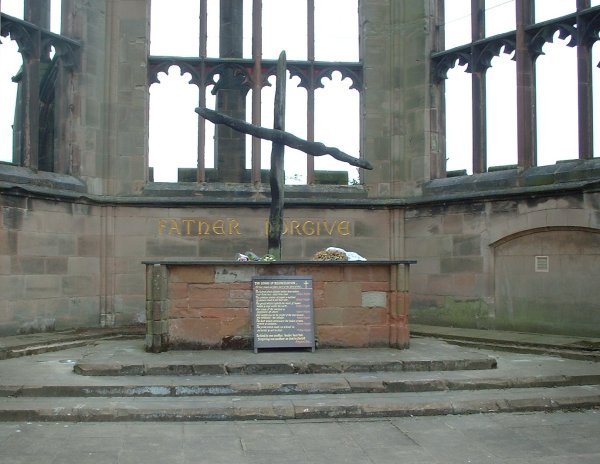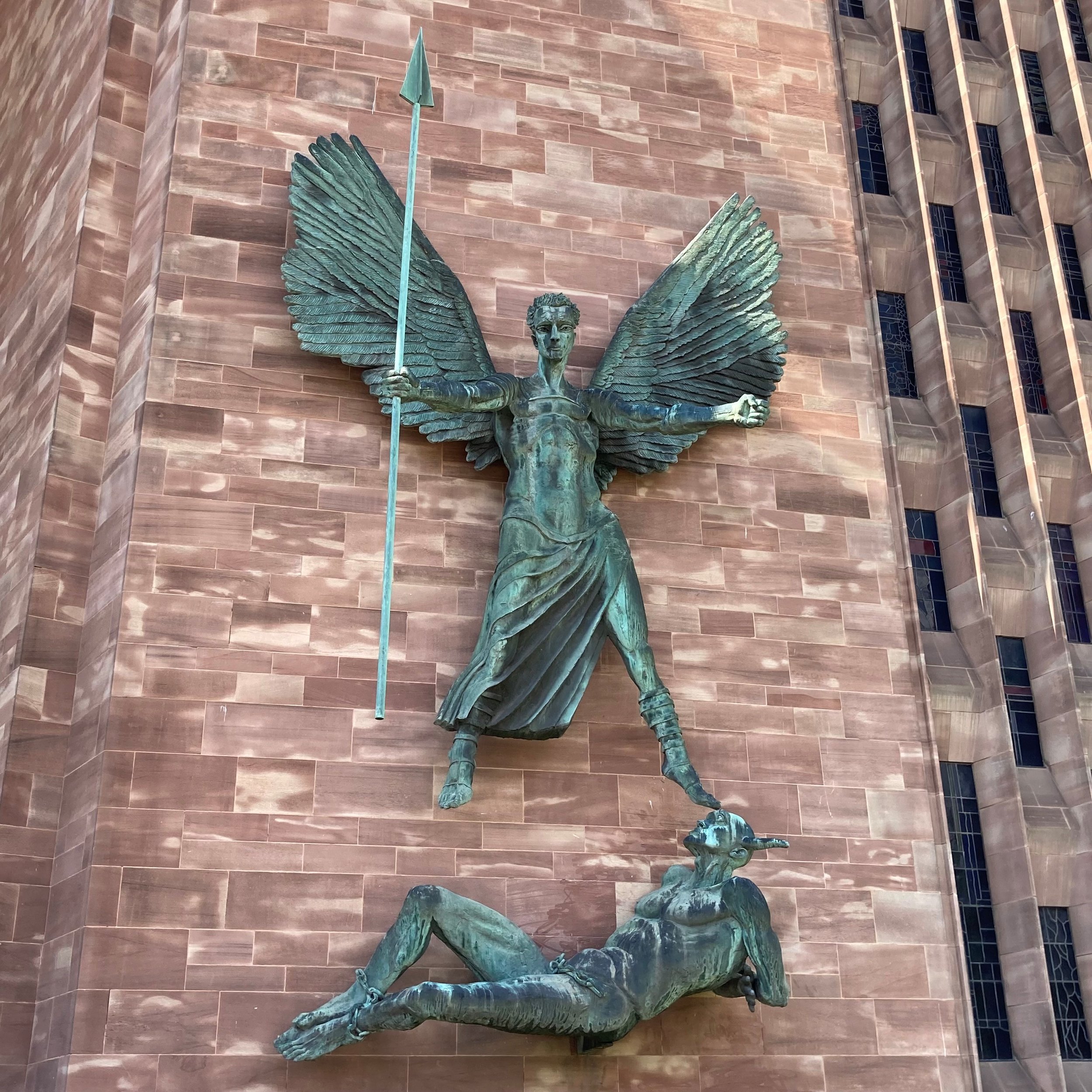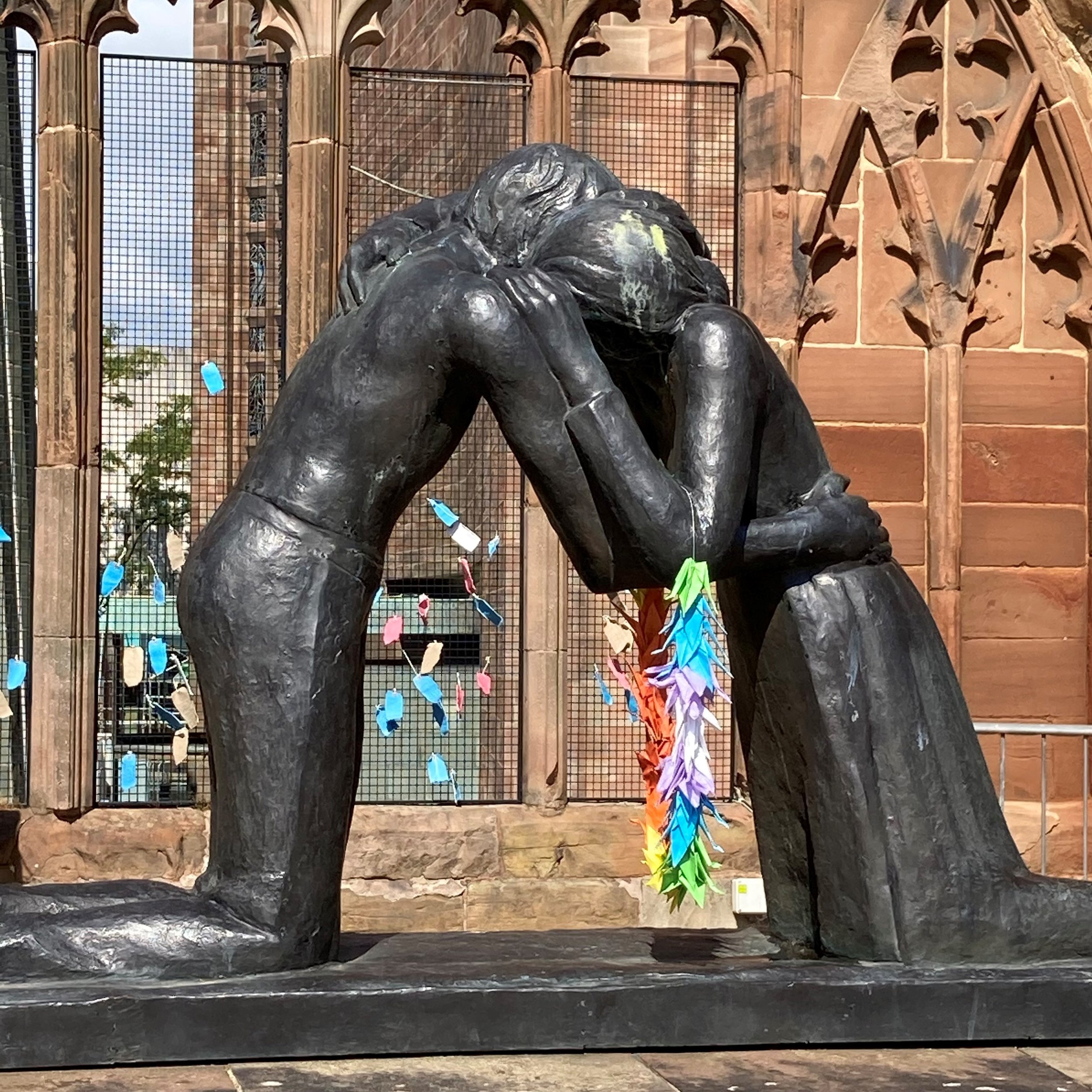Symbols of Peace
November 2021
Gethsemane Chapel, in the new portion of Coventry Cathedral
The BBC recently unveiled their new logos in an attempt to look more up-to-date and to help license payers ‘join the dots between the different bits of the BBC’. The fact that organizations are prepared to spend time and money on branding tells us that symbols matter. They represent something greater than themselves and are an essential part of helping us to make sense of, and navigate our way through, the world around us.
As the BBC’s need for a new look highlights, symbols can either lose their potency over time or their significance and meaning can change completely. A case in point is the bronze sculptured tomb of Bishop Yeatman-Biggs situated in the ruins of Coventry Cathedral. The sculpture was the only item to survive the destruction of the Medieval cathedral during the Coventry Blitz in 1940. Commissioned after the Bishop’s death in 1922 and unveiled in 1925, the Bishop’s mitre is covered in symbols, including swastikas. Back in 1922 the swastika was known as an Asian symbol of divinity and peace, – today it’s a chilling reminder of genocide and twisted ideology.
The destroyed portion of Coventry Cathedral still stands as a symbol today.
Coventry Cathedral is itself a potent symbol of change. The new Cathedral, which celebrates its Diamond Jubilee next year, is the phoenix that rose from the ashes of that terrifying and destructive night of the 14th of November 1940. The building is full of symbols, each carefully chosen and placed to point to something greater than themselves. Before my ordination we were all taken to the Cathedral’s font to be reminded that our Christian journey began at baptism. This carried extra significance for me as the font is made from a large piece of rock that comes from the hills situated just outside Bethlehem. The font is another powerful reminder that we are deeply connected to our sisters and brothers in the land where Jesus walked. The Middle East is the cradle of our faith and it’s why we should care about what happens there.
‘Father Forgive’ inscribed on the walls of Coventry Cathedral today.
It is often said that Israel and Palestine, and more particularly the piece of land known to Muslims as Al-Haram Al-Sharif and Jews as the Temple Mount, is the most contested piece of real estate in the world. The lands of the bible have been disputed for millennia and the fact that they are still fought over today reminds us of humanity’s inability to learn the lessons of history.
Statue of St Michael, Coventry Cathedral
On the day following the Coventry Blitz, the leader of the Cathedral community, Provost Richard Howard, used a piece of chalk to write the words Father Forgive on the ruined walls. His action was hugely controversial at the time, causing him to be vilified in the press and to fall out with the then Bishop of Coventry. Had Provost Howard added them to his chalked words no one would have looked twice, but his prayer refused to point the finger. Instead, he wanted us all to acknowledge “that all have sinned and fall short of the glory of God”.
Three Medieval nails that had fallen from the roof were bound together to form a cross and the Cross of Nails became a powerful symbol of reconciliation and hope that has been reflected down the years. Today there are over 200 Community of the Cross of Nails member organizations across the world, including Embrace’s partner In Israel/Palestine, Musalaha – an organization that specifically works to bring together Israelis and Palestinians in reconciliation.
Provost Howard’s actions on the day after the Blitz were tiny in comparison with the military might that had been unleashed on the city the night before. However, words written in chalk and three old nails have become symbols that have impacted lives in 45 countries on five continents, including the Middle East. Just as symbols are important and can change their significance over time, so actions matter and have the power to change lives for good or ill.
We know that making small changes can have a huge impact. The same principle applies to advocating for our friends in the Middle East. We can talk to the people we know and share with them the incredible work of Embrace’s partners. We can rejoice in and share what God is doing through the Church in the region with our own churches here in the UK. We can stand for peace and justice by drawing people’s attention to the multiple ways in which the lives of women, men and children are blighted by war, occupation, displacement, corruption and poverty. Small actions can result in big changes.
As we stand with our sisters and brothers in the Middle East let us be to them a symbol of solidarity as they are a symbol of hope and tenacity to us.
The statue of Reconciliation, Coventry Cathedral
By the Revd Su Mclellan, Senior Church Engagement Manager at Embrace and Curate at Coventry Cathedral
Find out more about Coventry Cathedral and its symbols.





